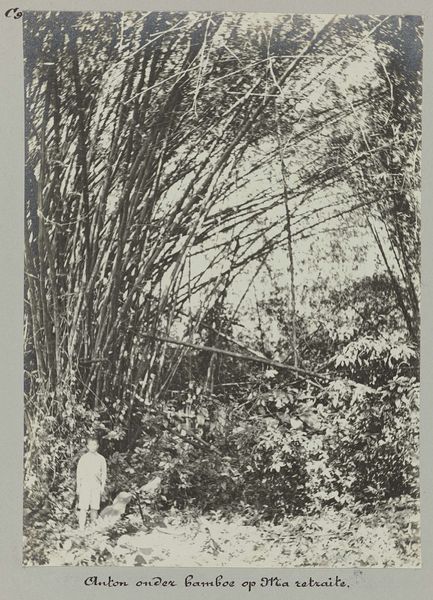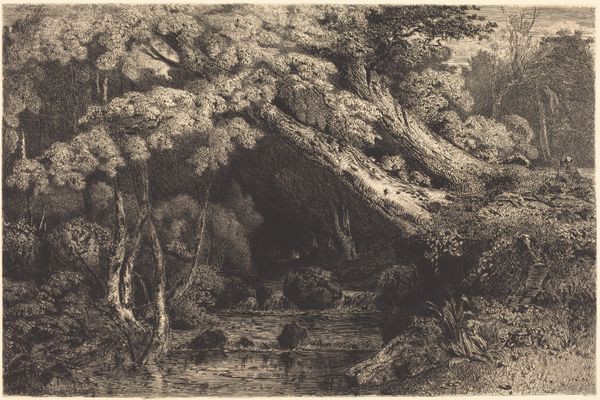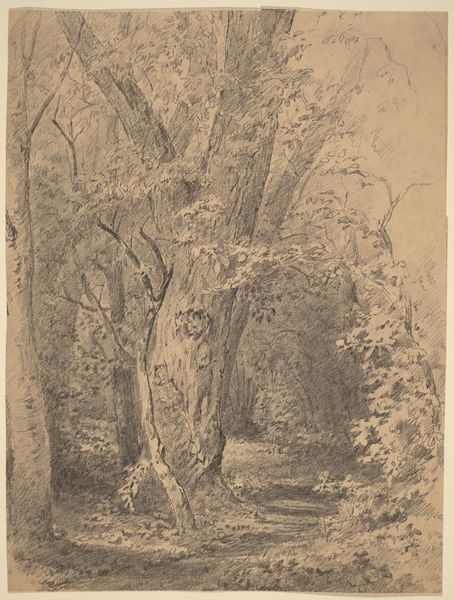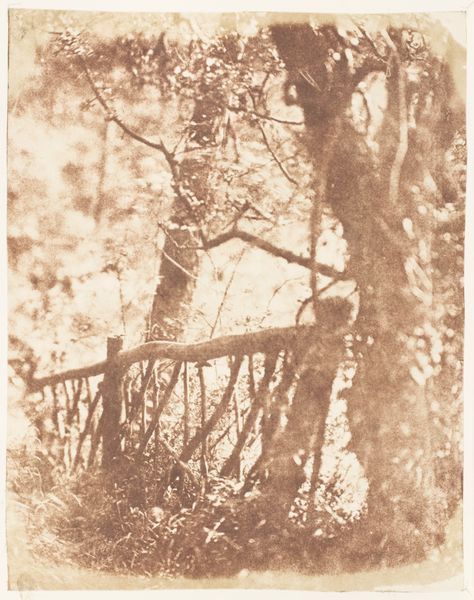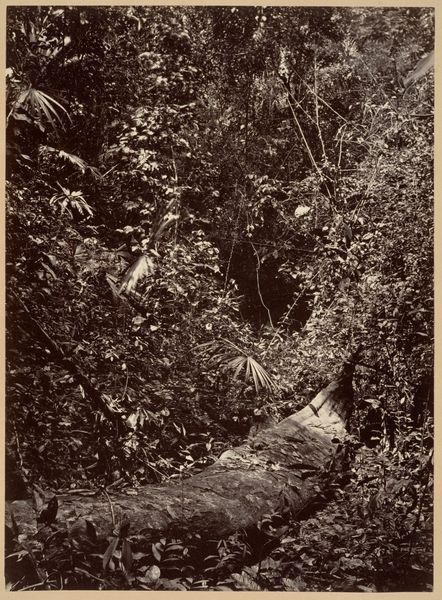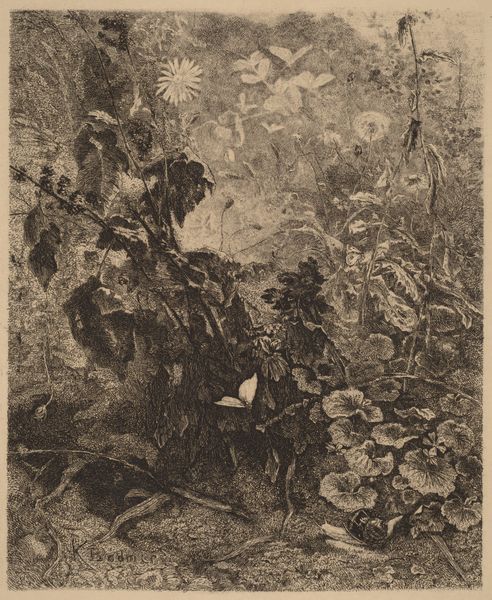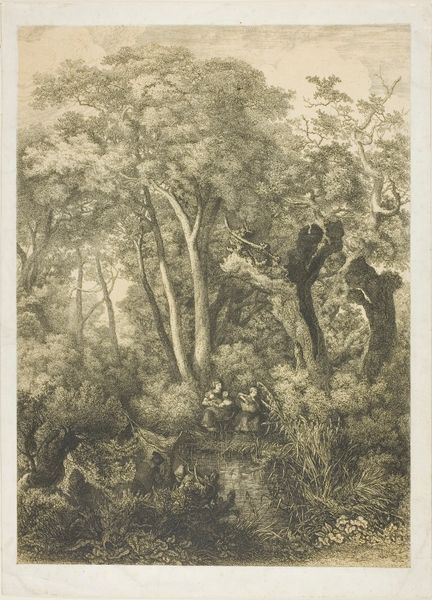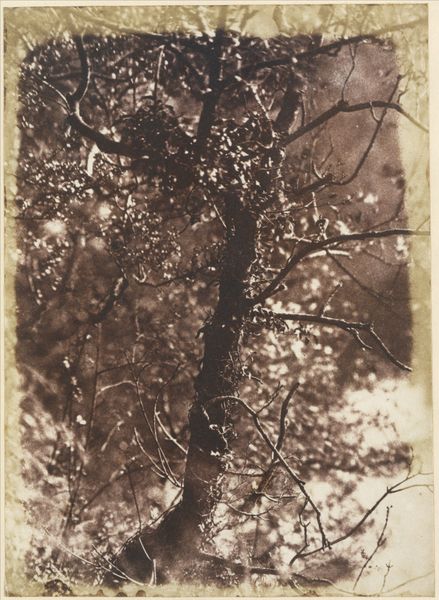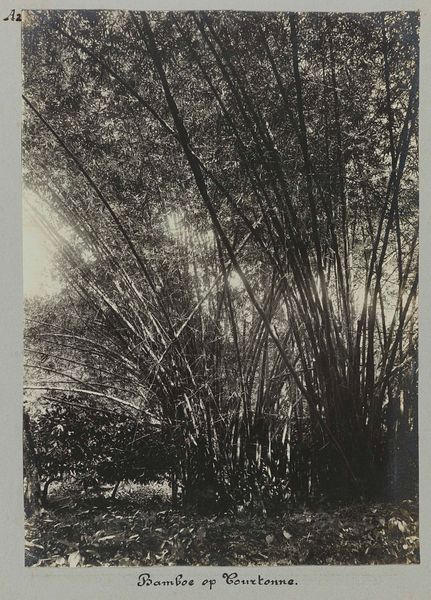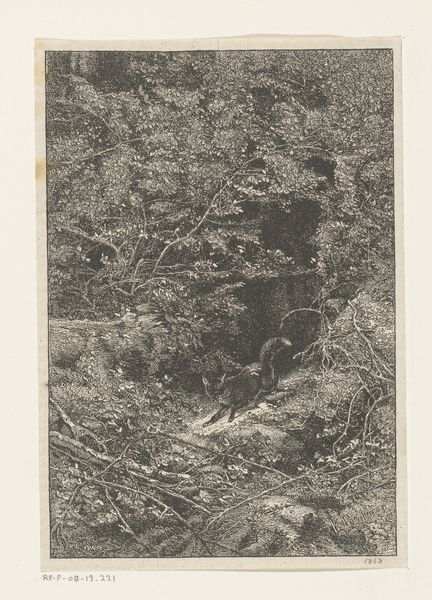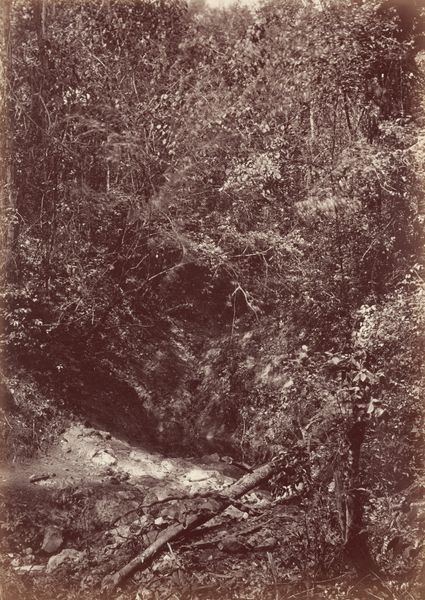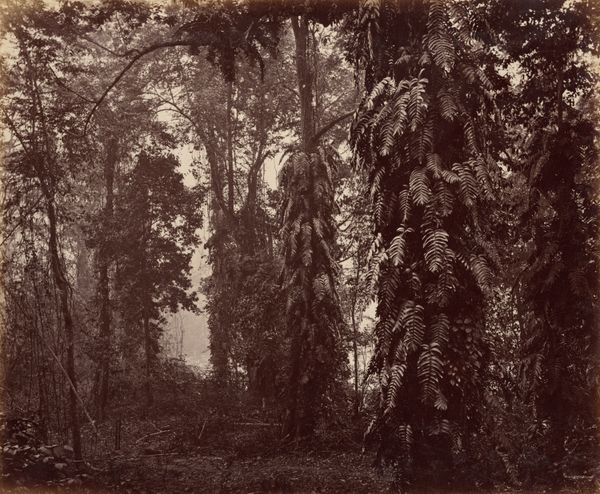
plein-air, photography
#
tree
#
garden
#
natural shape and form
#
natural world styling
#
natural formation
#
organic shape
#
plein-air
#
landscape
#
natural colouring
#
nature colouring
#
nature
#
photography
#
botanical photography
#
orientalism
#
natural palette
#
organic texture
Dimensions: Image: 10 3/8 × 8 1/4 in. (26.4 × 20.9 cm)
Copyright: Public Domain
Curator: John Thomson captured this photograph, titled "View in Camoens Garden, Macao," in 1869. It's currently held at the Metropolitan Museum of Art. What are your initial impressions? Editor: Hmm, immediate sense of dense enclosure, like I'm peering into some kind of hidden world. There's this fantastic layering of foliage, a real tactile quality to it despite being a photograph. A little overwhelming, in a way that's also enticing. Curator: Absolutely, the layering is key. Thomson was working during a period when photography was being used to document and categorize the world, particularly colonial spaces. These images helped to construct Western perceptions of "exotic" locales like Macao, reflecting broader power dynamics and discourses around empire and the Orient. Editor: Right, and thinking about it from Thomson’s perspective...imagine lugging all that bulky equipment into a garden like this! There's an element of sheer physical effort in getting this shot that’s kind of awe-inspiring. And, it’s all black and white—so how do you evoke a sense of tropical abundance without color? He nails it with texture. Curator: Exactly, and texture becomes incredibly important in these early photographs. Think about the way Thomson plays with light and shadow to create depth and highlight specific details. Look at the dense canopy overhead, for instance, or the tangled undergrowth at the bottom of the frame. It emphasizes both the beauty and the perceived untamed nature of this "oriental" garden. This image and others like it were circulated widely, shaping public imagination of East Asia. Editor: There's a certain stillness, too, even a little mystery, something brooding about it... I can almost feel the humidity. It makes you think of those "lost world" narratives from that era... like what hidden wonders might lie just beyond the frame? Curator: Well, to your point, the choice of Camoens Garden is interesting. It’s a space named after a Portuguese poet, suggesting a cross-cultural interaction, but seen through a very Western lens, don't you think? There's that power dynamic at play. And though he may not have thought so, it does, in a way, highlight issues of displacement, ownership, and cultural representation. Editor: That’s a rich point! So, thinking about it as both a historical document and a personal statement, there are several levels of interpretation running at once, aren't there? Curator: Precisely! This piece challenges us to interrogate historical representations, the role of photography in constructing those representations, and the ongoing legacies of colonialism in our understanding of the world. Editor: Yeah. Makes you think differently about those lush botanicals and shadowed corners, for sure. Thanks!
Comments
No comments
Be the first to comment and join the conversation on the ultimate creative platform.

